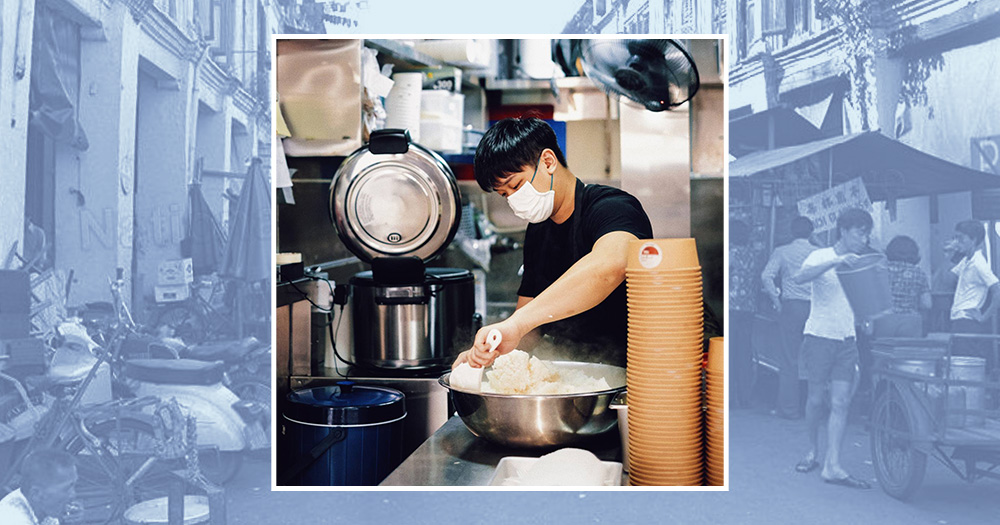Follow us on Telegram for the latest updates: https://t.me/mothershipsg
On Oct. 20, 2020, Fukudon — an “Asian fusion donburi specialist” — opened its doors for the first time.
On the menu were items like the chicken breast oyakodon, spicy garlic pork collar don with an onsen egg, and sukiyaki beef short plate don.
But it was Fukudon’s pork belly katsu don that caught the eye of local food publication Seth Lui: “This one features thick, crunchy, succulent slices of pork lovingly simmered with eggs and onions and laid over with Fukudon’s special sauce,” gushed the writer.
Such dishes wouldn’t be out of place in a hip eatery or even a nice Japanese restaurant going upwards of S$15 — maybe even S$20 — a bowl.
It’s no surprise, given the man serving them up was 26-year-old Remus Seow, a chef who’d cut his teeth working in Michelin-starred kitchens.
Yet what made Fukudon special was the fact that it operated out a hawker stall at the Marine Parade Central Food Centre surrounded by local fares like char kway teow and chicken rice.
“The moment I opened the shutter, nobody came,” said Seow, recalling Fukudon’s first day in business to me.
“For a good 15 minutes, everybody walked past and looked… then the first customer came by… and the second one. Then suddenly ‘boom’ there was a queue. I couldn’t cope because it was going so fast.”
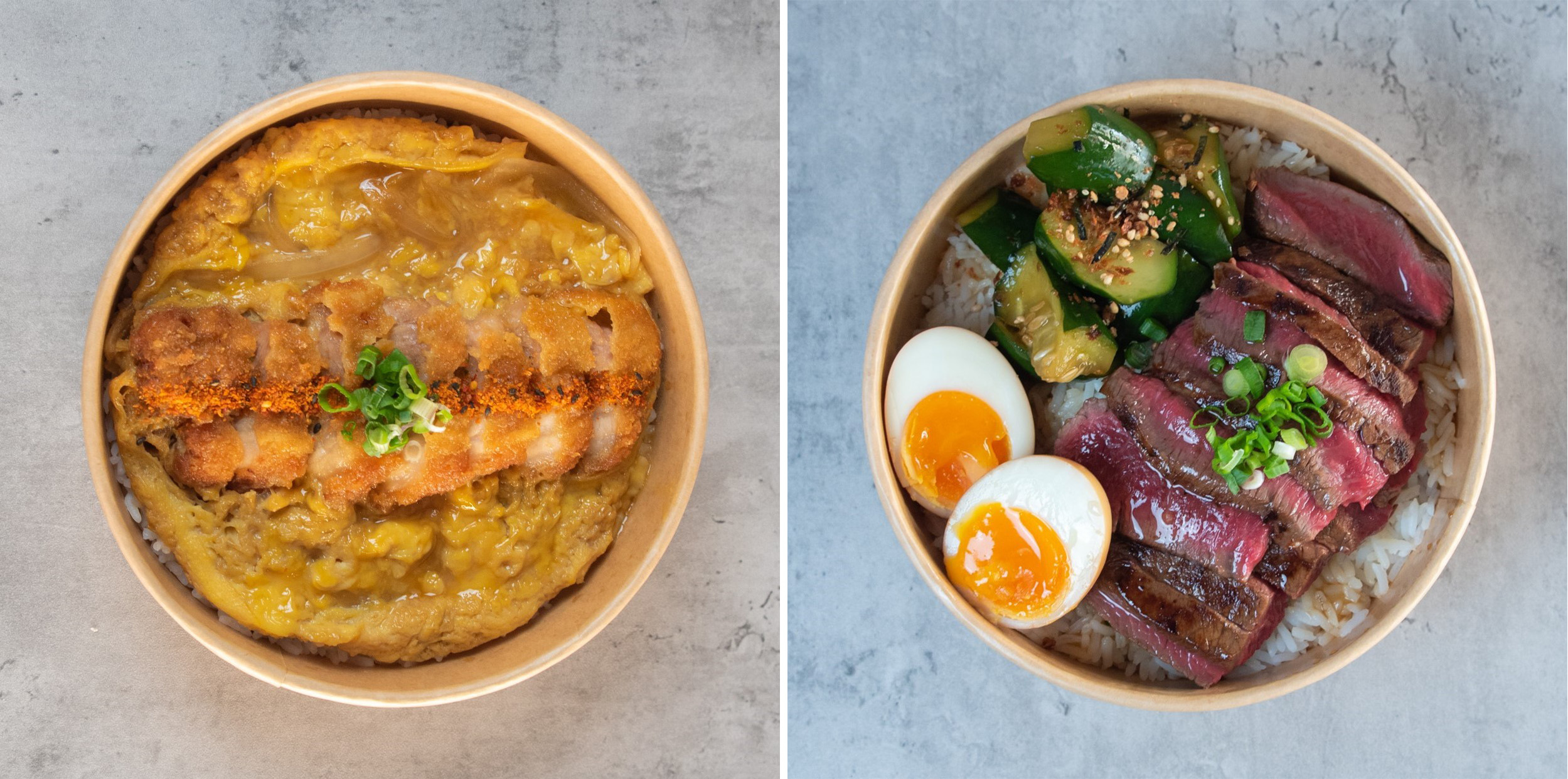 Pork Belly Katsu Don and Wagyu Onigiri Don. Image courtesy of Remus Seow.
Pork Belly Katsu Don and Wagyu Onigiri Don. Image courtesy of Remus Seow.
It wasn’t long before they had to turn away customers; Fukudon had sold out on its first day in business.
From there demand for the stall’s affordable Japanese-inspired rice bowls (starting from S$5.90) only swelled.
In those early days, Seow said he sometimes took home five figures in profits a month.
It seemed that he had found a recipe not just for delicious dishes but also for a viable business.
Seow’s industry and vocation of choice is one that Singapore is already starting to mourn the loss of.
Our unique street food heritage and culture, it is said, is slowly dying out as the greybeards behind many of the most venerated hawker stalls edge towards a well-earned retirement.
Yet, Seow and Fukudon give us a glimpse into what might be the future of the hawker industry amidst the shifting concepts of success and ambition between generations.
From fine dining to Marine Parade
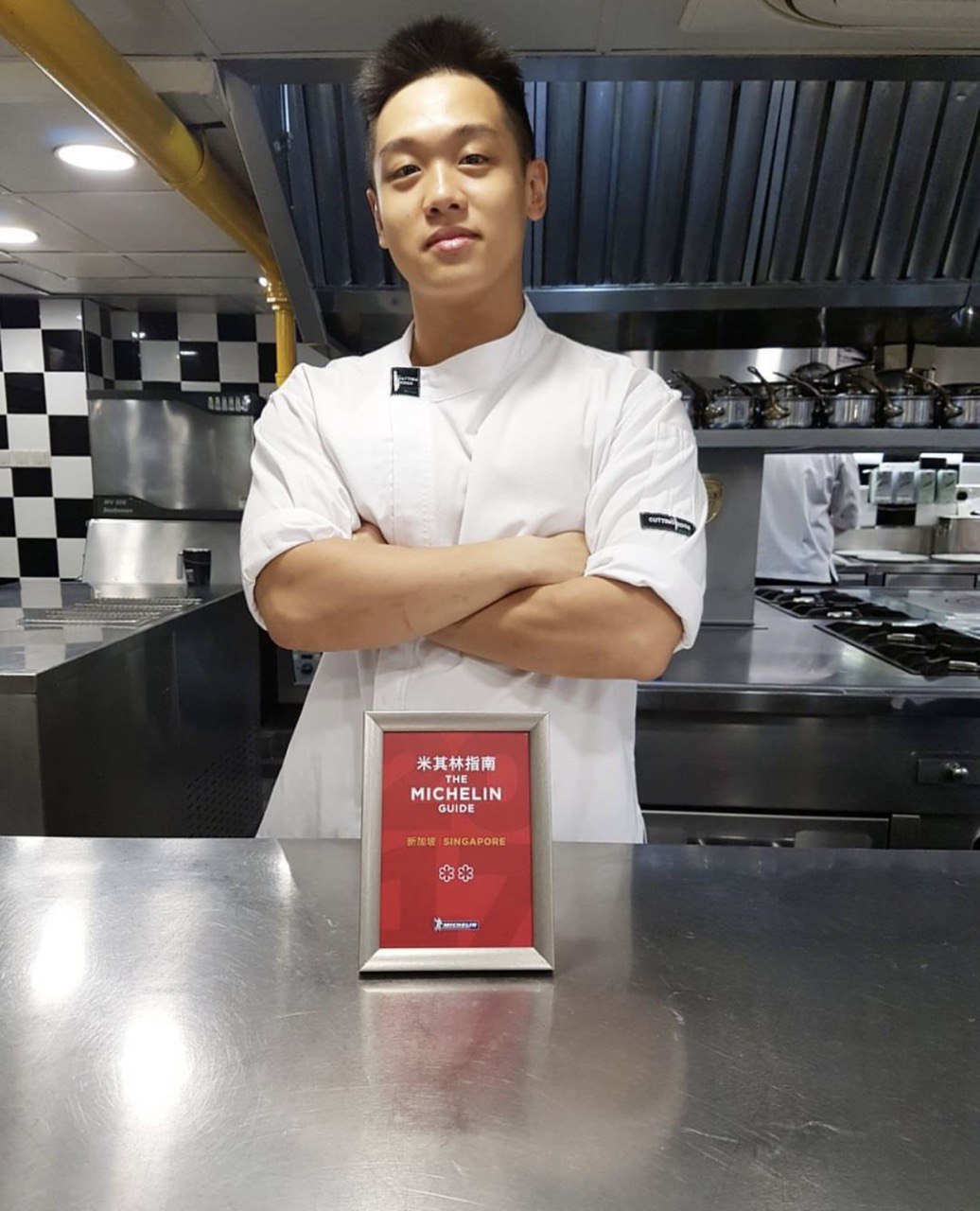 Seow during his days at Les Amis. Image courtesy of Remus Seow.
Seow during his days at Les Amis. Image courtesy of Remus Seow.
Before opening Fukudon, Seow’s burgeoning culinary career had seen him working in the kitchens of Les Amis — an Haute French restaurant boasting three Michelin stars — and Basque Kitchen by Aitor, a one-Michelin starred restaurant serving cuisine that Seow described as a combination of Spanish and French food.
Yet a promising career in fine dining was brought to a halt during the Covid-19 pandemic, as restaurants closed and preparing takeaway orders formed a large part of the daily grind.
Seow also had to take a pay cut while working hours didn’t change.
Then, a childhood friend, Jonathan Khoo, approached Seow with an interesting business proposal.
A mutual friend had decided to close his bak kut teh stall at Marine Parade Central Food Centre and needed someone to take over his lease.
Khoo’s idea was for the two of them to take over the space with a food concept that Seow would have the liberty to determine.
The inspiration for Fukudon’s rice bowls came from a Japanese stall at Seow’s secondary school.
“I ate it every day. It was like simple chicken oyakodon, with egg, onions, a lot of mayonnaise and a lot of sauce.”
“I felt this was a memory that I can tap on,” said Seow.
It was another set of experiences from his youth that also helped Seow make his decision to go into the hawker business, impressions formed by his connection to Marine Parade — which he described as his “hometown” having grown up in the area — and the very hawker centre that he works at today.
“This hawker [centre] has given me so many great memories. Till today, I can still see myself running as a boy to the Indian stall to buy rojak, or going to the char kway teow stall to buy char kway teow but being very scared of the uncle.”
But the sentimentality had to be balanced with cold hard numbers. Even with the pay cut, Seow’s job earned him a steady income; leaving was fraught with uncertainties.
It had to be a sound financial and business decision.
“I did some calculations — on rental, on the food costs — based on whatever experience I had,” Seow said.
“I saw okay, it can work. If I chiong chiong chiong chiong chiong, this is what I could [earn]. So then I started R&D (research and development).”
A public nuisance and health hazard
Despite the calls for the preservation of hawker culture today, the trade wasn’t always viewed favourably.
According to the National Library’s Biblioasia, the job has its roots in the street food peddling commonly found around Singapore in the early colonial period. Back then many considered hawkers a public nuisance.
While the slapdash arrangement of street food vendors hindered foot and vehicular traffic, the real worry was health-related.
Biblioasia cited an 1895 report by the Municipal Health Office as assessing hawker food to be “extremely liable to contamination”; food was apparently prepared over drains “containing all manner of filth, even human excreta”.
Concerns about diseases like cholera and typhoid moved the colonial government to try and rein in the itinerant vendors, though attempts to licence and register the hawkers were largely futile.
A 1957 headline in the Singapore Free Press illustrated the colony’s hawker problem. It read, “30,500 hawkers are potential ‘killers’ in Singapore: Health officers alarmed at dangers”.
The accompanying article painted a nauseating picture:
“A satay hawker had a pot of gravy, into which practically every customer dipped two or three times with the same stick. The sticks had been in their mouths a number of times. A hawker selling a Cantonese meal of roast pork, duck, entrails and rice was squatting near a stinking drain, while cutting the foodstuffs. Flies flew about him…
In some shops, food was stale and others sold pieces of meat left over by customers. A mee seller wiped the sweat from his body with his hands and then handled food. Some hawkers were seen buying rotten vegetables from street urchins who had salvaged the foodstuffs from dustbins. Many hawkers spat and rubbed their hands on their mouths and then served customers.”
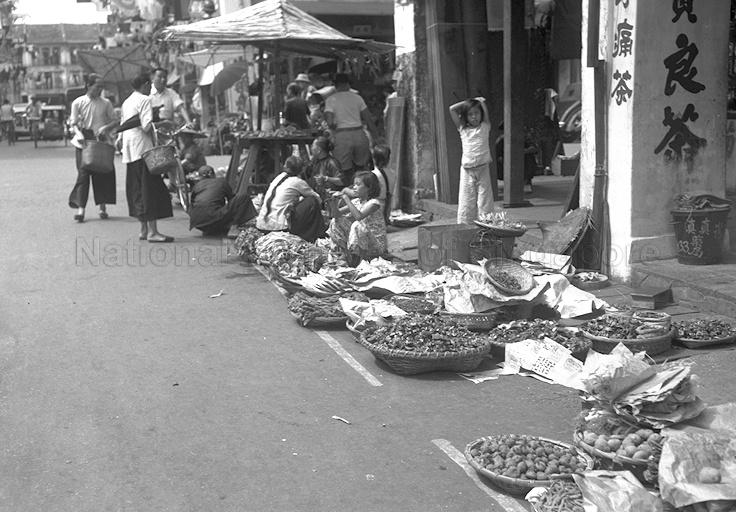 Hawkers on Trengganu Street, circa 1950. Image from the National Archives Singapore.
Hawkers on Trengganu Street, circa 1950. Image from the National Archives Singapore.
More than 60 years after the Municipal Health Office had identified the health and hygiene issues arising out of food vendors hawking their dishes on the streets, little had changed.
By 1965, Singapore had achieved independence and the newly minted government set about resolving the hawker predicament.
During the parliamentary debates of December 1965, Minister for Health Yong Nyuk Lin noted that out of the 40,000 to 50,000 hawkers operating in Singapore, only about 10,000 were licenced.
“This is, therefore, an impossible situation which has gone on for far too long and should be stopped accordingly,” he said.
Representative of just how the vocation was viewed at the time, Yong opined that “the hawker problem is not a problem by itself. It is a social problem.”
Working as a hawker, he continued, was an “attempt to find a simple way of earning a living” which arose because of the “very serious unemployment situation in Singapore”.
Nevertheless, hawkers had to “play according to a few rules,” said Yong, so as to avoid becoming a menace to public health and traffic.
Yong’s speech in parliament preceded a mass registration exercise of hawkers that included relocating them from busy roads; the Hawker’s Code, which controlled licencing and conduct of hawkers; and the establishment of a special squad to crack down on illegal hawkers, wrote Biblioasia.
The big game changer, however, was the introduction of purpose-built hawker centres which facilitated improved sanitation and regulated hawker health, requiring stall holders to undergo medical examinations for example.
These developments paved the way for the hawker culture that we are familiar with today.
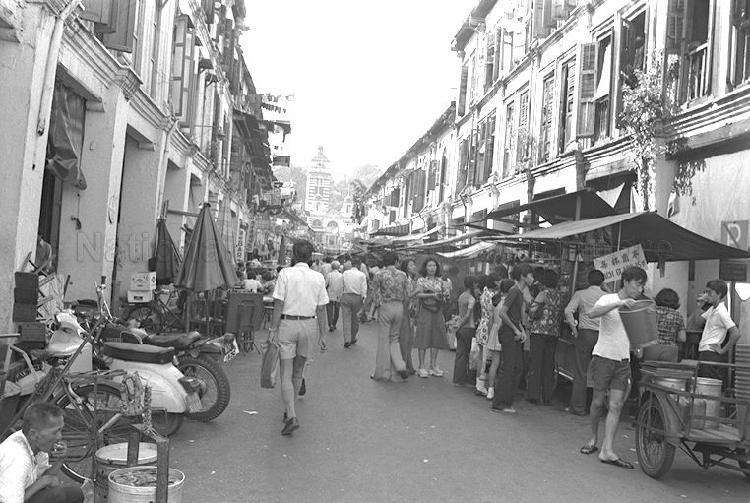 Hock Lam Street Hawkers, circa 1975. Image from National Archives Singapore.
Hock Lam Street Hawkers, circa 1975. Image from National Archives Singapore.
Only four categories of hawkers
And while we no longer think of hawkers as public nuisances, I can’t help but feel the hawker industry still suffers from at least one lingering sentiment from the early days of Singapore’s independence.
In 1974, Parliamentary Secretary to the Minister for the Environment Chor Yeok Eng shed some light on the government’s policy regarding hawker licensing.
Chor explained that only four categories of people would be granted a licence:
- Licenced hawkers affected by any government redevelopment scheme
- Those have disabilities due to industrial or other accidents and have thus lost their capacity for hard labour or complicated work
- Those who receive social welfare assistance
- Those above the age of 40
The rationale, said Chor, was that the more educated younger generation should use “their talent and capabilities to compete in the field of international industrial technology”.
“They should not commit themselves to the world of petty hawking to make a small profit as their time and talent would be wasted,” he added.
“Furthermore, by competing in the technical field, they will contribute not only towards bettering themselves but also to the national economy as a whole. Therefore, we should encourage our young people to embark on the right path.”
In some ways, this disposition towards the hawker trade continues today, despite the fact that it is much easier to become one, and that the national conversation has somewhat moved towards venerating our street food culture.
While Chor was speaking of national priorities, similar sentiments might have also been internalised on an individual level.
It might offer an explanation for why hawker culture is slowly dying out; responding to a query from Mothership, the National Environment Agency (NEA) said that in the first eight months of 2022 and also during the same period in 2021, about 10 per cent of persons who took up stall tenancies to run hawker businesses at various hawker centres were aged 30 and below.
To oversimplify and grossly generalise: there is a feeling by some that no one with other options wants to be a hawker. Instead, they dream of working in tech-start ups, high-flying bank jobs, corporate law firms, or Michelin-starred restaurants.
Entrepreneur in a hawker centre
Seow’s foray into the hawker trade couldn’t be further removed from the “world of petty hawking” Chor had in mind during his 1974 speech in parliament.
As sales and queues grew for his rice bowls grew, the 26-year-old realised that Fukudon had to evolve from what was essentially a one-man operation if it were to be a sustainable venture.
Seow soon took on employees, a move that immediately set him apart from many hawkers in Singapore who tend to run their stalls as husband-wife duos or as a family outfit.
Before long, in response to demand, Seow and his partner Khoo set up their second outlet; on Dec. 15, 2021, Fukudon opened at a coffee shop in Edgedale Plains in Punggol. A third and fourth outlet, Seow told me, were already in the works.
A contrast to the traditional view of hawking, Seow and Khoo function as entrepreneurs whose domain of business just happens to be the hawker centre.
The ambition of the pair goes beyond “a simple way of earning a living”, hawking for Seow appears to be an opportunity to pursue his passion for cooking while at the same time taking advantage of the low barriers to entry to set the foundations for a bigger business.
Inevitably, expanding beyond the confines of the one-man-one-stall model standard among hawkers has meant — at least for now — a reduction in profits. Seow oversees five staff across his two outlets with wages now representing a significant portion of his costs.
“It’s a very big difference with staff and without staff,” he explained.
“Without staff of course I take home a bit more. Back then I was making S$10,000? It’s a great number but you do it every month, you see how long you can do it? Everyday? Cannot.”
These days, Seow says that his takings these days range from less than S$2,000 for a bad month to S$6,000 for an exceptional month.
“But my goal is not to earn big bucks — I mean [I want to earn] big bucks along the way, but not big bucks now,” said Seow.
“I’m trying to create a brand.”
30 years a hawker
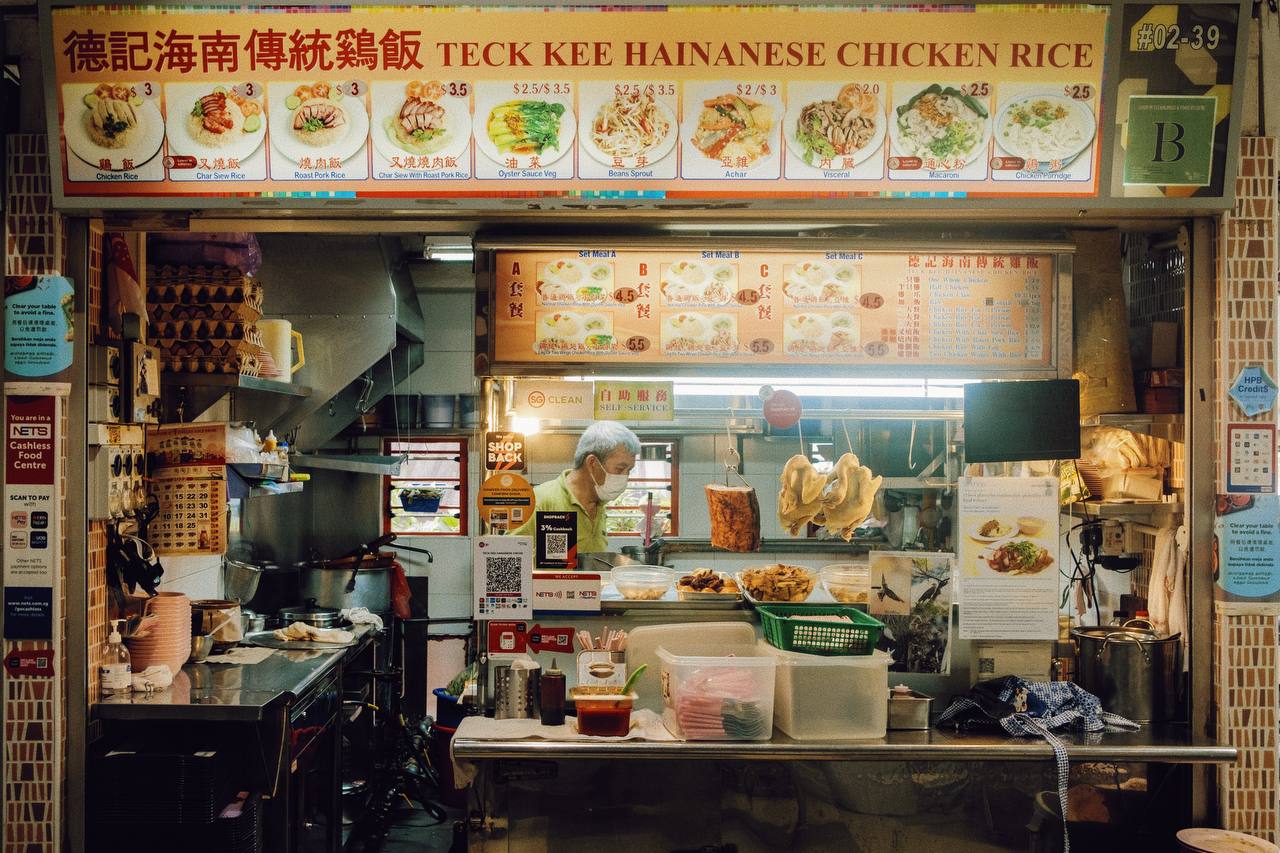 Image by Andrew Koay
Image by Andrew Koay
While it may not always appear alongside revered institutions like Boon Tong Kee or Tian Tian in listicles compiling “the best Chicken Rice stalls in Singapore”, Holland Drive Food Centre’s Teck Kee Hainanese Chicken Rice has quite the cult following. According to The Straits Times, queues can start to form even before the stall opens at 10:30am.
This year, 2022, marks three decades since 59-year-old Wong Teck Tang and his wife started running the stall after Wong lost his job as a carpenter in 1992.
He’d picked up a knack for culinary arts from his late father, who was the chief cook at the National University of Singapore's hostels for 49 years.
“Until today, we still maintain the authentic Hainanese chicken rice,” Wong told me.
“We don’t do shortcuts.”
Although he may not have spent time in Michelin kitchens, Wong’s eye for detail and passion for the ingredients used in his cooking was not found wanting.
Hearing him speak about the types of ginger available to chicken rice hawkers and how different variations might have an impact on flavour, I was struck by how similar it was — both in language and substance — to Seow’s own approach to his fusion rice bowls.
Wong is also business savvy.
He told me of the spreadsheets that he had drawn up to track sales and how he used data compiled from years of work to predict when he might need to increase his usual order of raw ingredients to meet periods of surging demand.
“You have to understand the market outside as a whole, does it suit [your business] on that day?” he said.
Yet, in contrast to Seow, Wong did not appear to have plans for his stall beyond its current operations. His 30-year career as a hawker has yet to spawn a second outlet.
While Seow splits his time between his Punggol and Marine Parade outlets, Wong wakes up each morning and makes the short walk from his home to his stall.
Having no employees to pay, the only thing affecting Wong’s bottom line, apart from fluctuating demand, was the rising prices of ingredients.
Besides, one suspects that having to run expanded operations might infringe on the time Wong has to chase his hobbies.
“I’m a photographer anyway. You see those pictures? These are for my customers, for them to enjoy it,” he said, pointing to laminated pictures of birds displayed prominently at the front of his store. They wouldn’t have looked out of place in an issue of National Geographic.
“I took many years to save up to buy the lenses (required to take close-up photos of birds). But that’s what I wanted. I’ve spent more than 40 years being a photographer.”
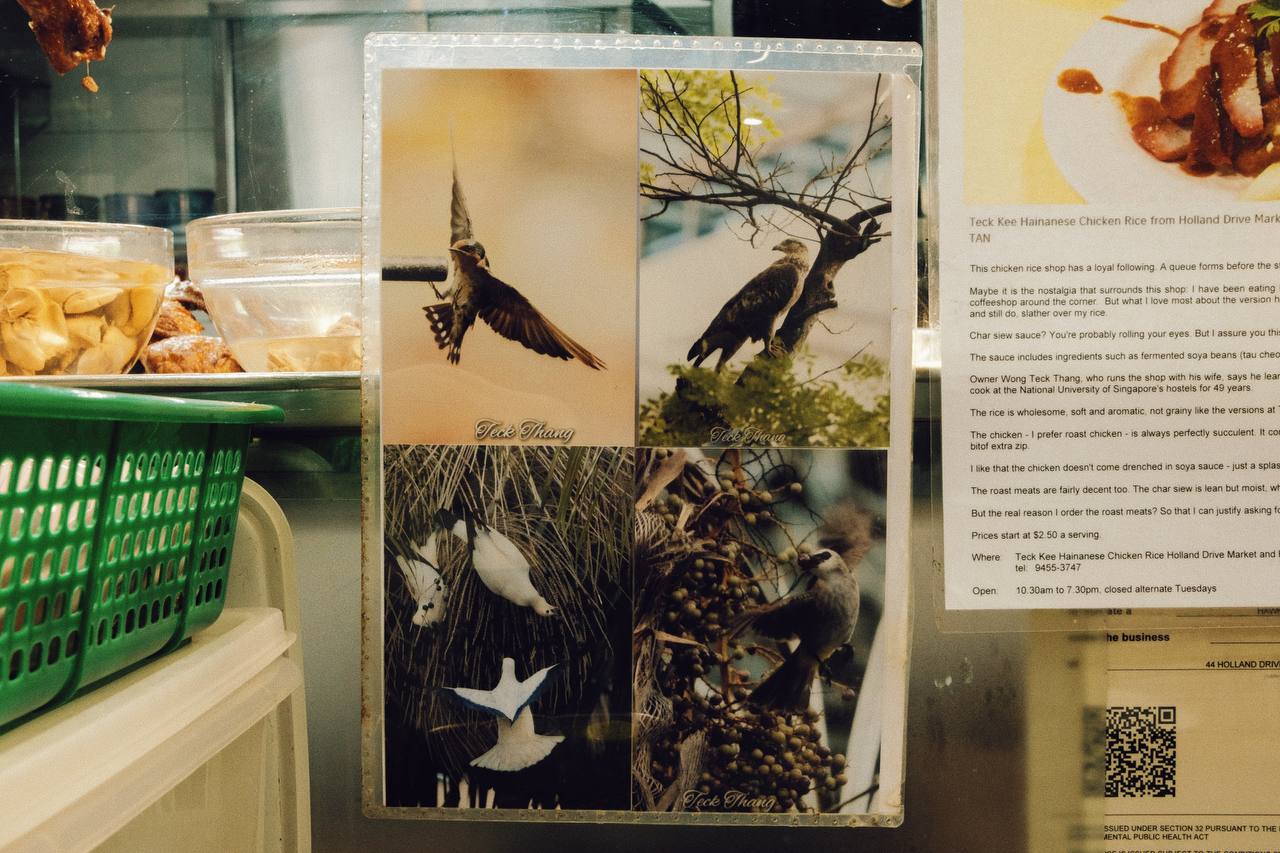 Image by Andrew Koay
Image by Andrew Koay
The future of Singapore’s hawker culture
Ultimately, whether Singapore’s hawker culture survives or not might depend on what we’re willing to accept as bona fide, and if young people can be convinced to join the industry.
Today, several initiatives and programmes exist to ensure that the skills and know-how of hawkers get passed on to the next generation.
This includes NEA's Incubation Stall Programme (ISP) which provides eligible aspiring hawkers pre-fitted stalls at 50 per cent of the market rent for nine months, followed by 75 per cent of the market rent for another six months. NEA told Mothership that as of Aug. 31, 2022, over 50 persons had enrolled in the programme, with about 11 per cent of them aged 30 and below.
The agency is considering increasing the amount of stores available under the ISP.
In 2020, NEA launched the Hawkers Development Programme, to equip aspiring hawkers with the skills to run a hawker business. The programme comprises classroom training, apprenticeships with veteran hawkers, and an incubation stage with mentorship support. As of Aug. 31, 2022, more than 470 persons have enrolled in the programme, out of which about 10 per cent of them are aged 30 and below.
There is also the Hawkers Succession scheme which aims to help veteran hawkers, who are intending to retire but are unable to find suitable successors among their family members or relatives, to pass down their skills, recipes and hawker stalls to aspiring hawkers.
Yet, unfortunately for us, Teck Kee Hainanese Chicken Rice is still likely only to exist as long as Wong and his wife have the energy to run the Holland Drive stall.
Meanwhile, chains like Food Republic are capitalising on the nostalgia by adorning their food court spaces with decor resembling the hawkers of old. Behind the scenes, however, is the machinery of a large multinational corporation.
The traditionalists amongst us will no doubt argue that the entrance of hawkers like Seow and Fukudon — with their social media savvy, entrepreneurial instincts, and fusion cuisine — is illustrative of our eroding hawker culture.
Another view might be that they’re simply reimagining the culture and its evolving place in Singaporean society. After all, it has already changed significantly from the days of colonial crackdowns and food being prepared over drains.
With Fukudon, Seow has thus far shown that hawking doesn’t have to be a dead end for ambition and career.
And maybe that’s what will prove enticing to the next generation.
Top image courtesy of Remus Seow and from the National Archives Singapore
If you like what you read, follow us on Facebook, Instagram, Twitter and Telegram to get the latest updates.
